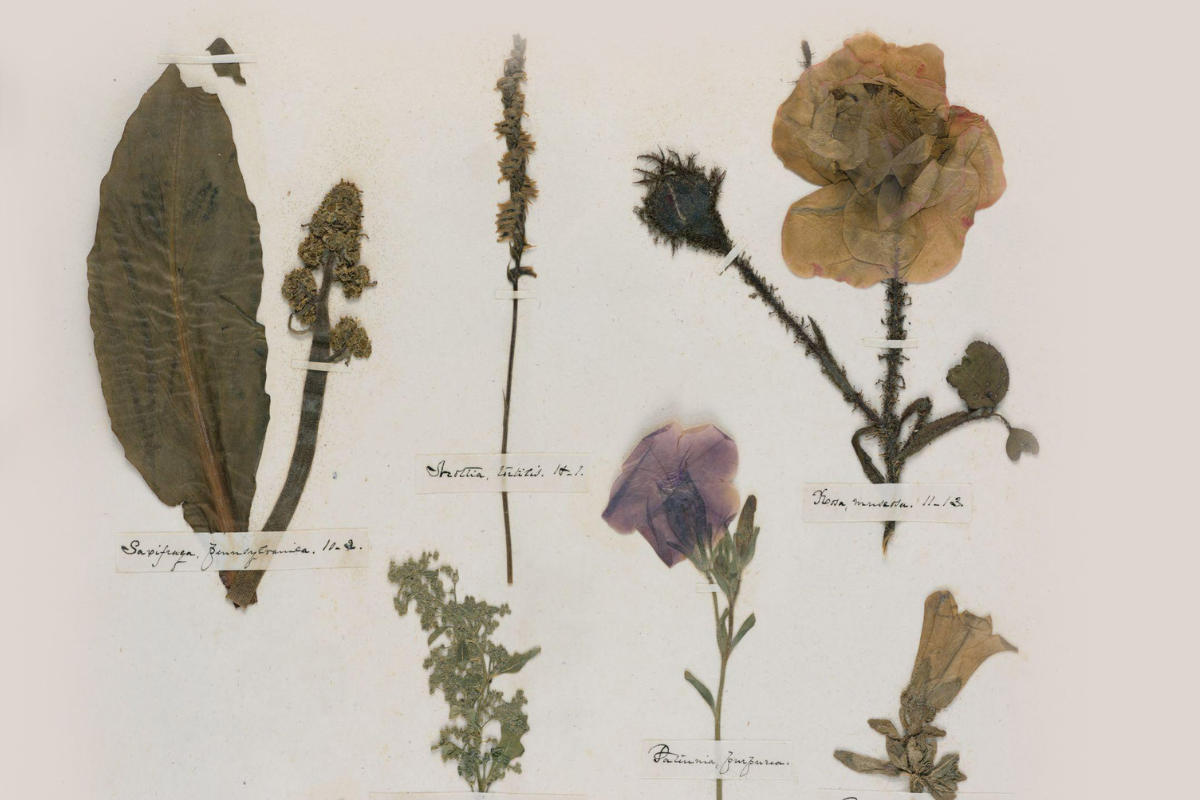The Botany of Poetry
What does a 19th-century herbarium have to teach us about plants and politics?
By the time Emily Dickinson was 16, she had completed an herbarium, a collection of 424 pressed plants artfully arranged on 66 pages of a hardbound album. Most of the specimens are labeled with their scientific name. Dickinson’s critics have never known quite what to make of this tome. Some argue that its beautiful arrangements precisely prefigure the writing Dickinson will do as an adult, as if cataloging flowers were preparation for creating poems. Others have observed that many girls of Dickinson’s social class would have made something similar as part of their schooling and that the only remarkable thing about this herbarium is that it has survived.
In my seminar German Theory 1: Plants and Politics, we learn how botany has always been as much an aesthetic as a scientific enterprise, and we ask why the uniquely interdisciplinary history of this field is important for contemporary debates about environmental devastation and the uncertain future of the planet. What does it mean to study the world around us by archiving samples of it in books? Why is nature something that has to be read as much as it is observed or analyzed?
Tags: Academics, Courses We’d Love To Take, Object of Study, Professors
